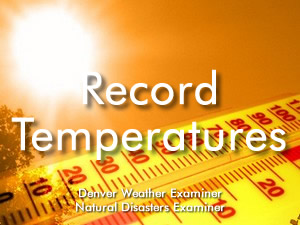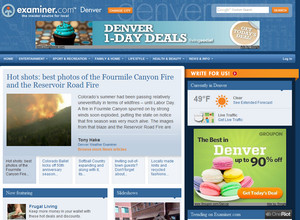
Does a move of 12 miles make a difference in what type of weather is seen in Colorado? Longtime residents know that our weather can vary greatly over short distances and this has many questioning the placement of Denver’s official weather monitoring station.
From 1871 to 1949 Denver’s weather was recorded at the National Weather Service’s office in downtown Denver. In January 1950 a move was made to Stapleton International Airport.
As that facility aged Denver opened Denver International Airport on the plains northeast of Denver in 1995. The weather service followed suit and moved the Mile High City’s official weather station the 12 miles to DIA.
Since that time, many weather watchers have noticed problems – DIA is consistently warmer and drier than the old site at Stapleton. Further, its remote location gives conditions far from where most people in Denver live and thus doesn’t accurately represent what they are experiencing.
- Get the complete story on Examiner.com – The fallacy of Denver’s climate records: Weather station move skews data
Even bigger issues arise when comparing weather data taken today with measurements previously recorded at Stapleton or downtown. The different microclimates of the sites are so different that it becomes much like comparing apples and oranges.
This was recently made evident with the string of 90 degree or warmer days we put together. If you went by the station at DIA, the streak lasted 18 days putting in a three way tie for the second longest streak in Denver history. However, no monitoring station closer to the city was as warm.
Further, while July was certainly a wet month, DIA’s precipitation measurements fell far short of most other locations.
Amid concerns about a warming climate, can we trust the measurements at DIA? How is it possible to compare the weather today with historical weather when there is such a large discrepancy?
We recently tackled this topic on the Denver Weather Examiner and the conclusion is obvious – It simply is impossible to correlate current weather records with Denver’s historical ones. Further, the National Weather Service seems intent on ignoring the issue.








 For the rest of this story including photos of all the equipment and amazing video of the tornado in Wyoming that the team intercepted last year, visit the Denver Weather Examiner.
For the rest of this story including photos of all the equipment and amazing video of the tornado in Wyoming that the team intercepted last year, visit the Denver Weather Examiner.



 Secondly, quite frankly we do get paid for writing for Examiner.com and that money directly supports and helps to pay for ThorntonWeather.com. The
Secondly, quite frankly we do get paid for writing for Examiner.com and that money directly supports and helps to pay for ThorntonWeather.com. The